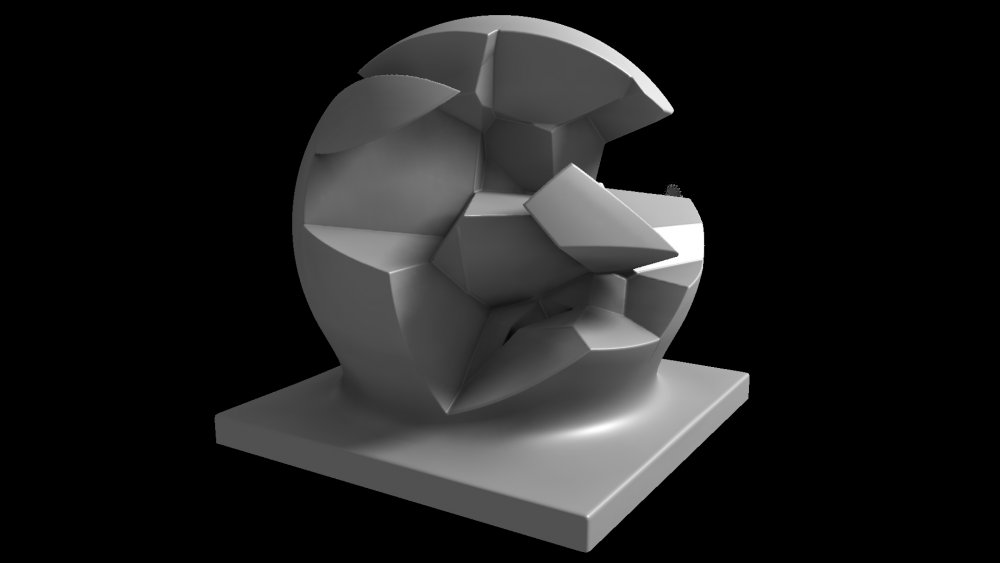Voronoi Node
Updated: 22 Mar 2024
Generates a 3D Voronoi pattern for procedurals.

Updated: 22 Mar 2024
Generates a 3D Voronoi pattern for procedurals.

Generates a 3D Voronoi pattern based on an input particle system. If no particle root is plugged in, then a default infinite pattern will be used.
Nodes connected to this node will generally follow the parent child hierarchy. Other Procedural Generator nodes can be configured to combine with this shape using their CSG modes, and displacement nodes will only apply to this shape.
These properties control the 3D transforms of the node. Transforms will generally be inherited by child nodes, although they can be ignored through the Inherit Transform Channels attributes.
| Parameter | Details |
|---|---|
| Position X | The objects position along the local x-axis. |
| Position Y | The objects position along the local y-axis. |
| Position Z | The objects position along the local z-axis. |
| Rotation Heading | The objects rotation around the local y-axis. |
| Rotation Pitch | The objects rotation around the local x-axis. |
| Rotation Bank | The objects rotation around the local z-axis. |
| Scale X | The objects scale along the local x-axis. |
| Scale Y | The objects scale along the local y-axis. |
| Scale Z | The objects scale along the local z-axis. |
Control the inheritance of the transforms from the parent.
| Parameter | Details |
|---|---|
| Position | Toggle inheritance of the Position from the parent. |
| Rotation | Toggle inheritance of the Rotation from the parent. |
| Scale | Toggle inheritance of the Scale from the parent. |
| World Position Only | Inherit the world position from the parent only, rotation and scale will be ignored. Overrides above properties. |
| Inherit Time | Toggle inheritance of time from the parent. |
These properties control the core behaviours of the node.
| Parameter | Details |
|---|---|
| Num Particles | Number of particles to be used to generate the voronoi shape. |
| Mode |
Select how the voronoi points are sourced.
|
| CSG Mode |
These options change how a this procedural node combines with the existing of the procedural system.
|
| CSG Blend Weight | How much the new procedural blends with the old procedurals, depending on the CSG Blend Weight. |
| Custom CSG Code | Type your Custom code here, using the HLSL language. Read more on Editable Code. |
The properties control the time at which the node is active. See Timeline for editing time segments.
| Parameter | Details |
|---|---|
| Duration |
Control the duration of the node’s time segment.
|
| Node Time | The custom start and end time for the node. |
| Duration (Timecode) | The length of the node’s time segment (in time). |
| Duration (Frames) | The length of the node’s time segment (in frames). |
| Time Segment Enabled | Set whether the node’s time segment is enabled or not in the Timeline. |
| Name | Description | Typical Input |
|---|---|---|
| Particle Node | Connect a particle system to generate the procedural shape. | Particle Root |
| Transform Modifiers | Apply the transforms of another node to this node. | Null |
| Target Node | Modifiy the rotations of the node to always direct the z axis towards the input. | Null |
| Local Transform Override | Apply the transforms of another node to this node, relative to its parent. | Null |